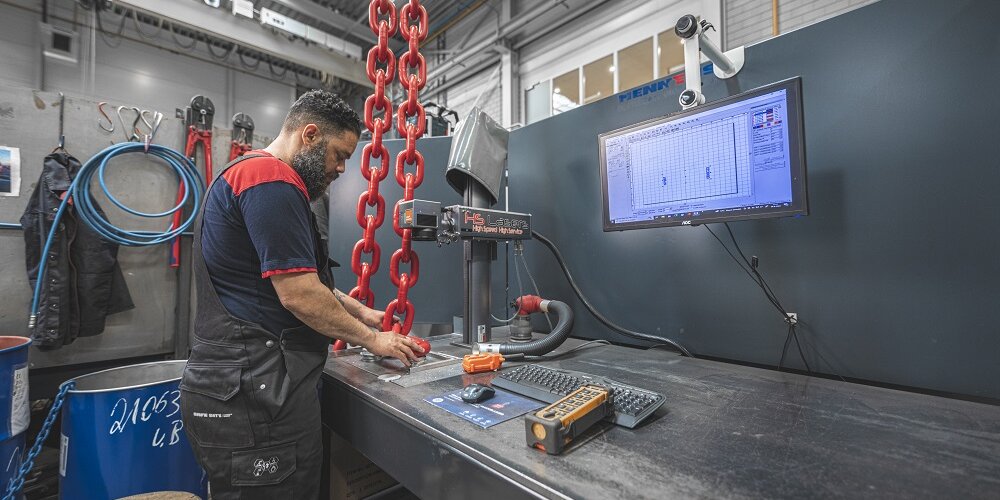
Inspection and testing of chain slings.
Chain slings are used when abrasion resistance and durability are required. A chain sling is flexible. A chain sling is easy to shorten, there are many components to choose from, it can withstand high temperatures and is relatively easy to store.
Visual inspection of chain slings before use, “what should I pay attention to”?
Chain slings should be inspected before each use for obvious signs of wear or deformation.
The chain sling must be immediately taken out of use for further inspection, maintenance and repair if the following defects occur:
- illegible markings (missing identification and lifting capacity specifications) on the chain sling
- deformation/twisting of the chain links and components
- stretched chain
- limited movement of the chain links relative to each other
- excessive wear such as cuts, nicks, grooves, incipient cracks, excessive corrosion or other defects
- signs of widening hooks, i.e. noticeably wider mouth opening or other deformations in the hook end.
If at any time there is reason to doubt the safe condition of the sling, it should be take out of use and thoroughly examined by a competent person.
Annual Inspection required
A thorough inspection of the chain work must be carried out at least annually by a skilled competent person. It is a visual inspection, supplemented if necessary by measurements and/or tests, with the aim of identifying any damage or wear that may affect the suitability of the sling for use.
Additional inspections may be necessary in the meantime, depending on operating conditions.
This annual inspection must always be registered and documented.
Four annual inspection and inspection
In addition to the annual thorough inspection, chain work must be inspected at least once every 4 years by a professional competent person. Chain slings must be thoroughly visually inspected, measured and tested.
The 4 annual inspections must always be registered and documented.





